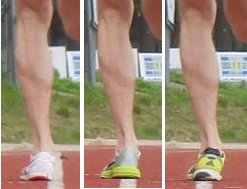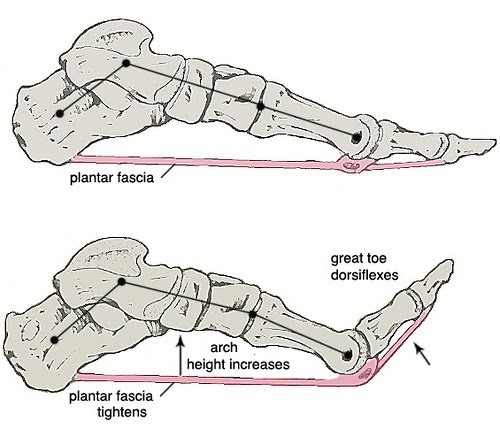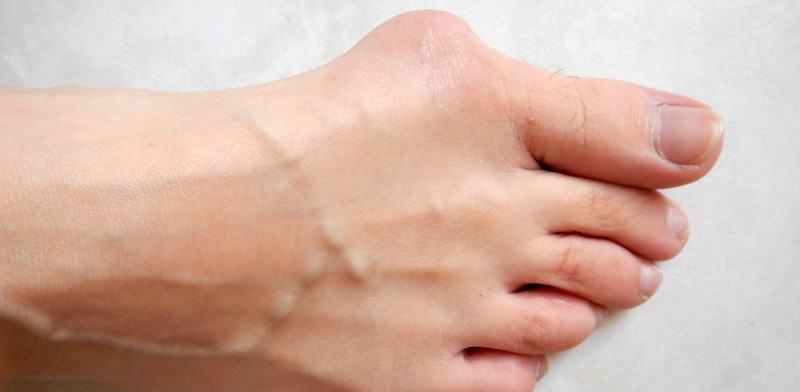Image from Liberal Dictionary of Zola Budd, known for racing and training barefoot.
She likely has/had good foot intrinsic muscle function doing all miles like that.
A great deal of focus in the rehab and performance world has been on core stability. Core training is commonly prescribed or utilized to improve proximal stability, reduce supposedly abnormal movements of the spine and pelvis and a variety of other reasons. I would go so far as to call this quite the fad in the fitness industry, as often the absurdness of the exercises can cause more issues than solutions (Sahrmann, 2010). As anyone with a decent understanding of kinesiology will know, the key is balancing the movements from the larger extrinsic muscles with the stabilizing forces of the small intrinsic muscles. For the longest time, core stability was considered to be the most important aspect of performance and contribution of the extrinsic muscles was largely downplayed. Everything is important. Balancing out the forces is key. We know understand that everything is important. Core stability is important to create a stable proximal foundation for the extrinsic muscles to generate appropriate force and movement.
The foot and ankle were thought of in the opposite way for a long period of time. The focus was mostly on the extrinsic muscles (posterior tibialis, anterior tibialis, gastrocsoleus) and what little focus was given to the intrinsic foot muscles involved simple toe flexion exercises. These included towel curls and picking up marbles. This was especially true when it came to stabilizing the medial longitudinal arch (which has been discussed frequently on this website).
Image from www.accessmedicine.com
What we know now is how important the intrinsic foot muscles are for stabilization and how to better activate them. Traditional exercises like towel curls and picking up marbles are great, but those exercises still involve a great deal of extrinsic muscle activity. If you are trying to isolate the intrinsics, that it a problem. If you are trying to get everything to work, then they are fine.
There are many intrinsic muscles in the foot and ankle, with four separate layers. The most superficial layer involves the flexor digitorum brevis (intrinsic toe flexor), the abductor digiti minimi (pulls out little toe) and the abductor hallucis (extremely important in normal 1st toe alignment. Often becomes lengthened in conditions such as hallux valgus or bunions). The second layer involves the quadratus plantae (supports the extrinsic toe flexors) and the lumbricles (flex MTP joints but extend IP joints). The third layer involves the flexor hallucis brevic (intrinsic 1st toe flexor), the oblique and transverse heads of the adductor hallucis (brings 1st toe in. Often short in hallux valgus or bunions) and the flexor digiti minimi brevis (5th toe intrinsic flexor). The final layer involves the dorsal and plantar interossei (which abductor and adduct the toes respectively).
ASSOCIATED RUNNING IMPAIRMENTS
Excess Pronation (Click for link to Movement Impairment Post)
The intrinsic muscles of the foot play a very important role in controlling movement of the longitudinal arch (Kelly et al., 2014). Furthermore, fatigue of these muscles increases the rate of arch collapse (Headlee et al., 2006). Given that controlled pronation is involved actively to help absorb shock, it makes sense that further evidence supports the role of the intrinsic muscles in both arch control and shock absorption during landing (Okamura et al., 2018). Thus a lack of activation of the intrinsic muscles may be contributory to excessive and uncontrolled pronation of the foot and ankle.

Image from Runblogger
ASSOCIATED INJURIES
Plantar Fasciitis
There is some evidence in the connection between uncontrolled pronation and plantar fasciitis (Pohl, Hamill, Davis, 2009). What seems to be a bigger issue is poor shock absorption putting greater stress on this tissue as the plantar fascia acts to transfer forces (Pohl, 2009). Given that the intrinsic foot muscles assist both with arch stability as well as shock absorption, these may be one of the many possible culprits in patients or individuals with this issue. The plantar fascia is part of the windlass mechanism, an incredible source of force transfer and efficiency in human gait (Bolgla & Malone, 2004). In many individuals with poor arch control, a lack of resupination during terminal stance means that they fail to properly traverse across the great toe. If the great toe does not properly dorsiflex or extend, the plantar fascia is not pulled tight and the arch of the foot does not stiffen to provide a stable base to push off from during propulsion. So not only is it important for stability of the arch, intrinsic muscle activation may help facilitate proper power generation during the terminal stance (toe off) phase of running).

Image from Physiopedia
Hallux Valgus
Lack of proper use of the intrinsic muscles, lack of proper resupination during gait, not adequately using the plantar fascia and rolling off the inside of the foot instead of off the big toe may slowly push the first toe toward the outside. This may end up leading to the classic hallux valgus position and eventually bunions. Bunions are often not hereditary (although some contributing factors might be), but occur because individuals put excessive and abnormal load through the medial aspect of the distal aspect of the first metatarsal. Wolfe's Law of Bone states that in normal individuals, bone will adapt to the stresses placed upon it. With excessive load through any area that should not have it, the bone begins to grow in response to the excessive forces to protect itself. As this progresses and the great toe is pushed inward, the abductor hallucis muscle becomes overly lengthened and the adductor hallucis muscles become shortened. This only further exacerbates a problem that could have likely been prevented by optimizing movement over the first toe, improving optimal muscle lengths and intrinsic muscle activation.

Image from Capital Area PT & Wellness
CORRECTIONS
There are several ways to improve the function of the intrinsic foot muscles. Current research seems to point to the short foot exercise (seen below) being the most effective for immediately improving arch height, intrinsic muscle activation and dynamic balance (Chung, 2016; Moon et al., 2014). There are obviously many ways to activate the intrinsic foot muscles, but the short foot exercise is a great place to start. In regards to training parameters, since the intrinsic muscles are small, it seems that motor control (quality of movement, control of movement) and endurance are more important than absolute strength (Headlee et al., 2008). Below are several exercises you can use to improve the function of these muscles. Based on the above literature, in regards to exercise parameters, higher repetitions, more frequently with better movement are most important. For example, working up to 3 sets of >20-30.
Short Foot


Literature demonstrates that the short foot exercise is a highly effective exercise for the intrinsic foot muscles both in the short and long term (Moon et al 2014). I use this frequently for activation of the intrinsic muscles because it is actually a difficult motion to master. Since there is a neuromuscular component to arch stability, having someone try to figure this out will help get their brain involved. This is a high repetition exercise (3 x 20-30 reps) and should be quickly combined with squatting, single leg balance, lunges and single limb squats to increase difficulty and functionality.
Toe Yoga

Image from Runtastic. Switch between the hallux down and the remaining digits elevated to the hallux up and the other digits down.
This is another great intrinsic muscle strengthening and coordination exercise. It allows for coordination of the great toe, which is an important pivot point and point of stability for the front half of the arch. The great toe (hallux) is much like the thumb. It has more power and stability capabilities than the other digits and thus must be trained as such. Most of those intrinsic hallux muscles also have some form of influence over the medial longitudinal arch, which is a significant point of control of foot and ankle pronation. This is another exercise that should be in the higher rep range and optimally should be practiced all day long. If your shoes are not too tight, you should be able to do this anywhere.
Toe Abduction aka Toe Spreading Exercise
Extremely challenging to learn from a motor control standpoint for most people
Toe Spreaders

Image from Correct Toes. Created by Portland Podiatrist Dr. Ray McClanahan, DPM, these are wonderful and durable toe spreaders. Although just about anything will work from Amazon, I have found this brand to be particularly durable (and you can use them while running!)
Training your foot muscles to work in proper alignment is key. All you have to do is perform some of these exercises with toe spacers or spend some time in them throughout the day. Get that 1st toe back into a neutral alignment and exercise the muscles in that position. That will help restore the normal length tension relationship of these muscles (particularly the interossi, abductor hallucis and adductor hallucis). These are especially important if you are having trouble with the above toe spreading exercise. You may not have the flexibility to perform that exercise yet! A little help won't hurt, so a pair of toe spacers are a worthy investment when it comes to injury prevention and foot function.
1st Ray Toe Flexion with 1st MTP Depression
That classic exercise with towel curls does actually help. You do need those large toe flexors to work. However, it equally important to make sure you are using all the correct muscles. It is very easy to recruit the extrinsic toe flexors (Flexor Digitorum Longus and Flexor Hallucis Longus) instead of the intrinsic toe flexors. A great way to work on this is toe flexion exercises while keeping the MTP joints (main toe joints) on the ground!
All these muscles are endurance muscles as mentioned above. Again, motor control and endurance are more important than strength (Headlee et al 2008). So ignore the typical 3 x 10 protocol. This should be either repeated sets of 20-30 repetitions or sets to failure (ie 1-3 sets of reps to fatigue). The best part? You can do all of these at work, at home, etc with or without shoes on. It doesn't matter where, just get these muscles working!
I should also mention that walking barefoot is another way to gently activate the intrinsic muscles. It is often not appropriate to do this in the workplace environment and may be borderline dangerous in city environments (there is some mixed evidence on whether "barefoot" style shoes truly replicate this although they are likely better than other options in some cases). However, given that even barefoot walking activities these muscles, it is important to spend some time throughout the day moving around without your shoes on. I am no longer a massive proponent of barefoot running as I believe it is simply a tool like everything else (and we have shoes for a reason). However doing barefoot walking and running is something worth easing into the same way you perform strengthening, core, flexibility or other mobility work. Everything is important and there are no short cuts.
As we mentioned with the lumbar spine, the intrinsic muscles of the body are important. However, they are not the end all be all to all problems of pain and performance. They are simply one part of the larger equation that is often missed. Do not forget about your extrinsic muscles, your movement quality (running form), footwear and more. There is no single muscle group or piece of equipment that will fix everyone's problems. Rather, it is the sum of all of them that will take you where you want to be.
Thanks for reading!
Matthew Klein, PT DPT OCS FAAOMPT
Doctor of Physical Therapy
APU PhD Candidate: Rehabilitation and Movement Science
Board Certified Orthopedic Clinical Specialist
Fellow of the American Academy of Orthopedic Manual Physical Therapists
Doctor of Physical Therapy
APU PhD Candidate: Rehabilitation and Movement Science
Board Certified Orthopedic Clinical Specialist
Fellow of the American Academy of Orthopedic Manual Physical Therapists
***Disclaimer: As always, my views are my own. My website should not and does not serve as a replacement for seeking professional medical care. I have not evaluated you in person, am not aware of your injury history and personal biomechanics, thus am not responsible for any injury that you may incur from the performance of the above. I have not prescribed any of the above exercises to you and thus again am not responsible for any injury that may occur from the performance of the above. This website is meant for educational purposes only. If you are currently injured or concerned about an injury, please see your local physical therapist. However, if you are in the LA area, I am currently taking clients for running evaluations.
REFERENCES
1. Bolgla, L. & Malone T. (2004). Plantar Fasciitis and the Windlass Mechanism: A Biomechanical Link to Clinical Practice. Journal of Athletic Training: 39(1): 77-82.
2.Chung, K., Lee, E., Lee, S. (2016). Effect of intrinsic foot muscle training on medial longitudinal arch and ankle stability in patients with chronic ankle sprain accompanied by foot pronation. Physical Therapy Rehabilitation Science: 5:78-83
3. Headlee, D., Leonard, J., Hart, J., Ingersoll, C., Hertel, J. (2008). Fatigue of the plantar intrinsic foot muscles increases navicular drop. Journal of Electromyography and Kinesiology: 18(3): 420-425.
4. Kelly, L., Cresswell, A., Racinais, S., Whiteley, R., Lichtwark, G. (2014). Intrinsic foot muscles have the capacity to control deformation of the longitudinal arch. Journal of the Royal Society Interface: 11. DOI: 10.1098/rsif.2013.1188
5. Kim, M., Kwon, O., Kim, S. Jung, D. (2013). Comparison of muscle activities of abductor hallucis and adductor hallucis between the short foot and toe-spread-out exercises in subjects with mild hallux valgus. Journal of Back and Musculoskeletal Rehabilitation: 26(20: 163-168.
5. McKeon, P., Hertel, J., Bramble, D., Davis, I. (2015). The Foot core system: a new paradigm for understanding intrinsic foot muscle function. British Journal of Sports Medicine: 49(5): 290.4. Kelly, L., Cresswell, A., Racinais, S., Whiteley, R., Lichtwark, G. (2014). Intrinsic foot muscles have the capacity to control deformation of the longitudinal arch. Journal of the Royal Society Interface: 11. DOI: 10.1098/rsif.2013.1188
5. Kim, M., Kwon, O., Kim, S. Jung, D. (2013). Comparison of muscle activities of abductor hallucis and adductor hallucis between the short foot and toe-spread-out exercises in subjects with mild hallux valgus. Journal of Back and Musculoskeletal Rehabilitation: 26(20: 163-168.
6. Moon, D., Kim, K., Lee, S. (2014). Immediate Effect of Short-Foot Exercise on Dynamic Balance of Subjects with Excessively Pronated Feet. Journal of Physical Therapy Science, 26: 117-119
7. Okamura, K., Kanai, S., Hasegawa, M., Otsuka, A., Oki, S. (2018). The effect of additional activation of the plantar intrinsic foot muscles on foot dynamics during gait. The Foot: 34: 1-5.8. Pohl, M., Hamill, J., Davis, I. (2009). Biomechanical and Anatomic Factors Associated With a History of Plantar Fasciitis in Female Runners. Clinical Journal of Sports Medicine, 19(5): 372-376
9. Sarhmann, S. (2010). Movement System Impairment Syndromes of the Extremities, Cervical and Thoracic Spines. St. Louis, Missouri: Elsevier Mosby.
Like and Follow Doctors of Running
Facebook: Doctors of Running Twitter: @kleinruns
Instagram: @doctorsofrunning Direct Contact: doctorsofrunning@gmail.com
Please feel free to reach out, comment and ask questions!












